



 The project is co-funded by the Regional Operational Programme of Lesser Poland for the years 2014 – 2020. The support of small and medium-sized enterprises which operate in tourism and increasing the recognisability of Lesser Poland as a tourist economic brand.
The project is co-funded by the Regional Operational Programme of Lesser Poland for the years 2014 – 2020. The support of small and medium-sized enterprises which operate in tourism and increasing the recognisability of Lesser Poland as a tourist economic brand.
How to get there?
e-podroznik.pl website would be of great assistance while planning organised transport
e-podroznik.pl
By bus
• Warsaw - Cracow - Nowy Sącz - Krynica-Zdrój
flixbus.pl
• Gorlice - Krynica
• Cracow - Brzesko – Nowy Sącz – Krynica-Zdrój
• Cracow - Brzesko – Nowy Sącz – Krynica-Zdrój
voyager-transport.pl szwagropol.pl rafatex.com
By train
Cracow - Tarnów - Nowy Sącz - Piwniczna Zdrój - Żegiestów-Zdrój - Muszyna - Krynica-Zdrój
rozklad-pkp.pl
Nearest airports
Cracow • Katowice • Rzeszów
CONTENTS
The project ‘The support of small and medium-sized enterprises which operate in tourism and increasing the recognisability of Lesser Poland as a tourist economic brand’ (no RPMP.03.03.01-12-0593/18) co-funded by the European Union as a part of the Regional Operational Programme of Lesser Poland for the years 2014 – 2020.
the Foundation for the Development of Regions www.f-rr.org
the Association of Polish Spa Communities www.sgurp.pl
Art Manager: Konrad Rogoziński
Text: Maria Kościelniak
Realization: Digital Places Multimedia Publishing www.digitalplaces.pl
Kraszewskiego 1/406
33-380 Krynica-Zdrój
Proofreading: Agata Kościelniak
Translation: Ewelina Natanek-Rogozińska
Design: Klaudia Stochmal, Nina Kieblesz
Typesetting Klaudia Stochmal, Nina Kieblesz
Photographies: © Konrad Rogoziński / DigitalPlaces.pl
Apart from:
P 8, photo no 3 © Janusz Kieblesz



P 17 Jan Kiepura www.szukajwarchiwach.gov.pl – a public domain
P 29, photo no 1 The ice rink © Łukasz Świętach
P 29, photo no 2 © Mirosław Hobora
INTRODUCTION GENERAL INFORMATION LOCATION/GEOGRAPHY INTERESTING FACTS SPA HISTORY IN A NUTSHELL KRYNICA-ZDRÓJ AROUND KRYNICA COMMUNE IN AN ACTIVE WAY ACTIVELY IN WINTER 02 04 06 08 10 16 18 22 24 26
Krynica-Zdrój

The pearl of Polish resorts hidden in the mountains

K rynica, the pearl of Polish resorts, is located among mountains, almost in their heart where mineral water springs flow out. The commune has been adored by tourists for ages. The resort, which used to be popular among aristocracy, is currently chosen by health visitors, enthusiasts of an active lifestyle, architecture lovers or businesspeople.
Krynica Commune is located in the south of Poland, in Lesser Poland, close to the border with Slovakia. It lies in the place where the Beskid Sądecki and the Low Beskids meet, right at the foot of Jaworzyna Krynicka and Park Mountain which is almost in the centre of the town. The seat of the commune is Krynica-Zdrój – a spa which is surrounded by smaller but equally interesting villages such as Tylicz or Mochnaczka. The location and the landform make Krynica an excellent starting point for those who enjoy spending their free time in an active way. The infrastructure of the place enables doing winter or summer sports. The resort provides numerous attractions and in the surrounding villages, you may find peace and quiet. The commune is crossed by numerous hiking trails including the Main Beskid Trail, cycling and skiing ones too.
The commune can also boast of a rich history. The south of the Beskid Sądecki and the Low Beskids are lands which used to be inhabited by Lemko people. Their heritage is visible in wooden Orthodox churches, small shrines and roadside crosses. The Wooden Architecture Route of Lesser Poland runs in this area. In the resort itself we can get to know the most famous Lemko of Krynica – Nikifor. We can visit the famous Deptak (a promenade) where great Poles used to walk and admire the works of great architects – villas in the Swiss style or spa buildings. We can see the remains of the Interwar Period when Krynica was the trendiest resort. Krynica-Zdrój can be also called the cultural capital of the region – the Festival of Jan Kiepura or various concerts are held in the Main Mineral Water Pump Room.
krynica-zdroj.pl

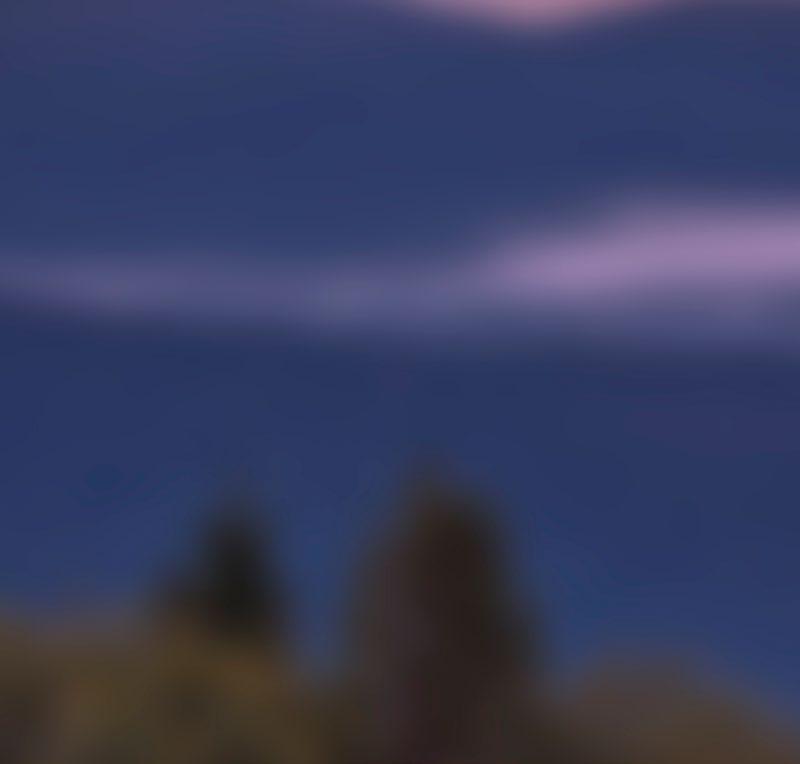
2 Krynica-Zdrój INTRODUCTION


3
A sea of mists which shroud Krynica-Zdrój at the break of day from Jaworzyna Krynicka
Voivodeship: Lesser Poland

Poviat: Nowy Sącz
Seat: Krynica-Zdrój
Villages: Berest, Czyrna, Mochnaczka Niżna, Mochnaczka
Wyżna, Muszynka, Piorunka, Polany, Tylicz
Neighbours on: Grybów, Łabowa, Muszyna, Uście Gorlickie
Commune and Slovakia from the south
Area: 145,3 km²
Population: approximately 16 780
Spa status since: 1922 r.
KRYNICA-ZDRÓJ
OTHER VOIVODESHIP CITIES CITY TIME DISTANCE Białystok Bydgoszcz Gdańsk Gorzów Wielkopolski Katowice Kielce Cracow Lublin Łódź Olsztyn Opole Poznań Rzeszów Szczecin Warsaw Wrocław Zielona Góra 559 km 623 km 737 km 685 km 221 km 195 km 140 km 349 km 420 km 605 km 326 km 600 km 138 km 787 km 370 km 408 km 580 km 7 h 30 min 7 h 40 min 8 h 40 min 7 h 40 min 2 h 50 min 3 h 20 min 2 h 20 min 4 h 30 min 5 h 20 min 8 h 4 h 10 min 7 h 2 h 30 min 8 h 50 min 5 h 30 min 5 h 6 h 40 min 4 Krynica-Zdrój GENERAL INFORMATION
DISTANCE BETWEEN
AND
MAŁOPOLSKA



Cracow Swoszowice Czarny Dunajec Piwniczna-Zdrój Szczawnica Rabka-Zdrój Muszyna
Krynica-Zdrój Uście Gorlickie
5
Location/geography
Among the Beskids
Krynica is an urban and rural commune located in the south of Poland in Lesser Poland right by the border with Slovakia. Krynica-Zdrój is its seat surrounded entirely by mountains. The majority of the commune is within the Beskid Sądecki but its south-east part belongs to the Low Beskids which are low not not only by their name as the peaks do not rise above 1,000 m. The border between the Beskids is marked by the Kamienica River, the Huta Pass and the Tylicka Pass. The resort itself is located at a height of 550 – 650 m in the beautiful valley of the Kryniczanka Creek which tucks into the surrounding mountains. Popular among visitors Park Mountain, at the foot of which mineral water springs flow out, towers over the town. The western part of the commune lies on
the slopes of Jaworzyna Krynicka (1,114 m) whose peak belongs to Muszyna Commune.
The location of Krynica, in the valley between the Beskids, makes it and neighbouring villages have the unique subalpine climate. It is characterised by a big number of sunny days, long windless periods and considerable fluctuations of temperature. Higher parts of the commune have a microclimate similar to the alpine one where snow appears in November and stays till March. It rains here for 70 days during a year and a snow cover remains for 120 days. The snow cover on the slopes of Jaworzyna Krynicka is usually 1 m and sometimes 2 m deep.
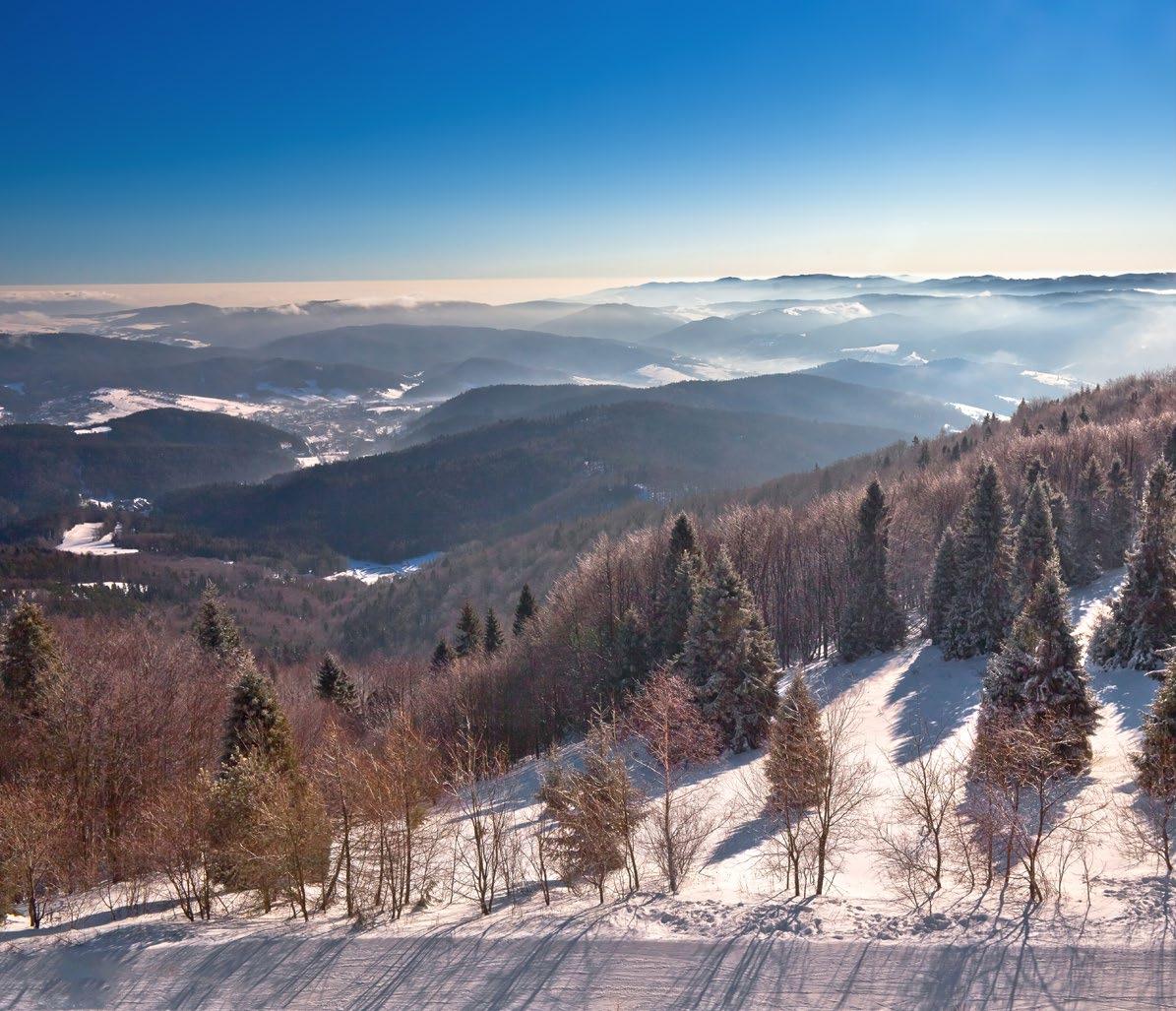 A view from Jaworzyna Krynicka (1,114 m) of the Czarny Potok Valley and distant ranges of the Beskids
A view from Jaworzyna Krynicka (1,114 m) of the Czarny Potok Valley and distant ranges of the Beskids
6 Krynica-Zdrój LOCATION/GEOGRAPHY
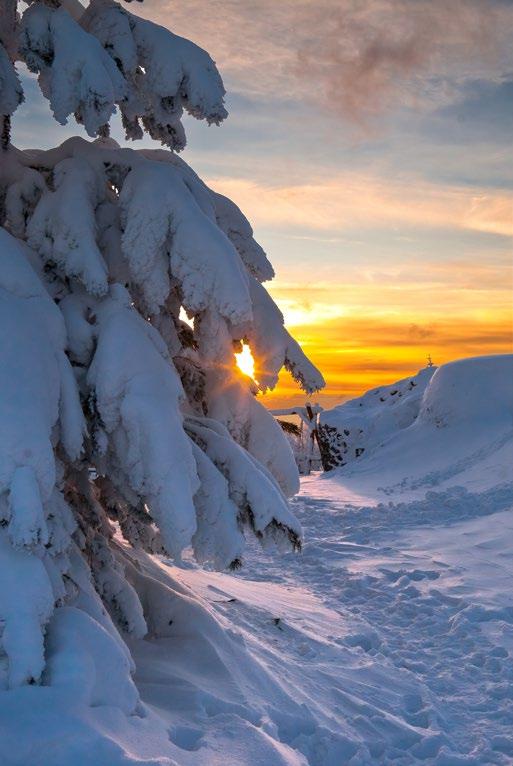




 The peak of Parkowa Mountain
The funicular will take us to the top of Park Mountain
The subalpine climate, very characteristic for this region, makes snow cover remain in the region for an exceptionally long time
The gondola lift will take us to the top of Jaworzyna Krynicka which towers over Krynica
Mild hills surround Krynica from every side
The peak of Parkowa Mountain
The funicular will take us to the top of Park Mountain
The subalpine climate, very characteristic for this region, makes snow cover remain in the region for an exceptionally long time
The gondola lift will take us to the top of Jaworzyna Krynicka which towers over Krynica
Mild hills surround Krynica from every side
7
The top of Jaworzyna Krynicka seen from Krynica-Zdrój
POPRAD LANDSCAPE PARK

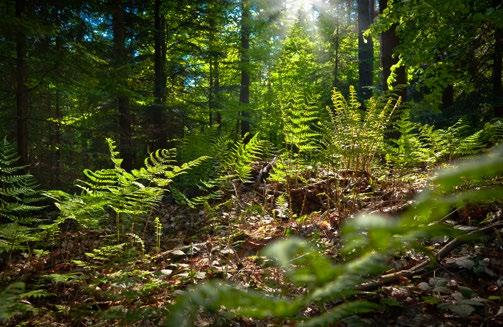
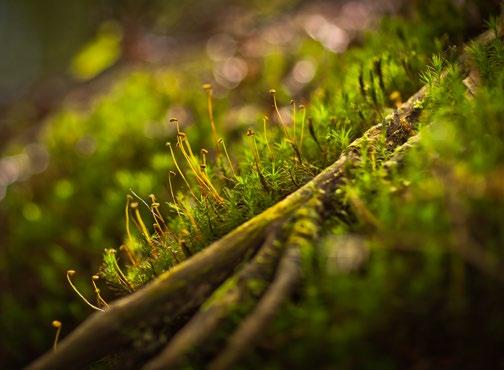
Poprad Landscape Park comprises almost the whole area of the Beskid Sądecki including Krynica Commune. In total it covers an area of 53,419.14 ha which makes it one of the biggest landscape parks in Poland. It was established in 1987 but Earl Stadnicki had created the base for it many years before. The main aim of the park is to protect the natural resources of the region and its amazing landscape. There are three altitudinal zones within its borders – a foothill zone, a montane zone and an upper montane zone. Apart from animate nature, we can see legendary rocks and caves for instance Diabelski Kamień (Devil’s Stone) or Jaskinia Zbójecka (Brigands’ Cave) situated below the peak of Jaworzyna Krynicka. The land abounds in mineral waters (they constitute 20% of all the waters in Poland). Moreover, there are 13 nature reserves and 130 natural monuments within the borders of Poprad Landscape Park.
BAR CONFEDERATE TRENCHES NATURE RESERVE
Bar Confederate Trenches is an incredibly interesting nature reserve. Not only nature but also the remains of the trenches of Bar Confederates are protected here. There is a board which contains information on Bar Confederation, trenches and battles which took place in this area. The reserve lies on a hill which rises over Muszynka – we will get there following the yellow trail which starts in the village of Muszynka. The hill is covered with a young forest in which we will come across rare plant species such as the stemless carline thistle, the lesser butterfly orchid or the dwarf everlast. The reserve was established in 1963 and covers an area of 2.62 ha.

INTERESTING FACTS
The approximate location of the Trenches over Muszynka
The Centre of Krynica-Zdrój 1 4
Muszynka 3
2 8 Krynica-Zdrój INTERESTING FACTS
MOFETTAS IN TYLICZ

One of the biggest natural curiosities of the commune are mofettas. It was believed that they were the places where a devil’s breath came to the earth surface. Such an association was formed due to the fact that small animals died in their vicinity and to the characteristic smell. And what exactly is a moffeta? It is a kind of volcanic discharge (various gases go out to the surface of the earth) not very hot (temperature below 100°C) which mainly consists of carbon dioxide (hence the smell and decreased content of oxygen which causes the death of small animals and insects). The mofettas in Tylicz are situated within the borders of a tourist estate ‘Domki w Lesie’ (Huts in the Forest). You will see there 11 circles – in each of them water has a bit different taste. They were made available to tourists in 2011 but they had been discovered much earlier. An interesting story, one of the biggest secrets of PRL (Polish People’s Republic), is connected with them. In the 60’s of the 20th century moffetas were surrounded with stone circles in order to grow algae in them – it is said that they have the best conditions for growth thanks to carbon dioxide discharges. The secret Centre of Research on Algae was created under the aegis of the Agricultural Centre. Why was it secret? The algae were supposed to be used as condensed food for astronauts of the Soviet Union.
THE DEVIL’S STONE AND THE BRIGANDS’ CAVE
Right below the top of Jaworzyna Krynicka, in the place where the blue and the green hiking trail meet, you will find two places fascinating in a geological way – the Devil’s Stone and the Brigands’ Cave. These are unique places in the whole Beskid Sądecki, wrapped in legends! The Devil’s Stone is a sandstone inselberg in the shape of a large mushroom with a height of 5 m. Its interesting form was shaped by the process of erosion and it is built out of rocks which have different levels of resistance to weathering. The shape has intrigued people living in the area for ages and triggered them to create various legends. One of them tells a story of the devil who supposedly dropped the stone at the place. The devil decided to destroy the church in Krynica. He prepared a huge stone and wanted to throw it on the resort. However, he was surprised by the sunrise and the cockrow – as we know the sun makes all devils lose their strength. The devil lost his power close to the top of Jaworzyna Krynicka and dropped the stone on the slopes of the mountain. There is another legend which claims that if lovers find the Devil's Stone, their love will last forever. Another place worth seeing is a cave called the Devil’s Hole or the Brigands’ Cave. It is 40 m long and 12 m deep. It is said to be a hideout for brigands’ treasure.


5 6 7 9
Spa
Where Kiepura used to stay
Krynica-Zdrój is probably the most well-known resort in Poland which has been visited by health visitors for ages. It has also been trendy among artists and it used to be chosen by aristocrats. It offers plenty of attractions to tourists and has great accommodation possibilities. Let us add mountain climbing and breathtaking views to that. It is a real pearl among Polish resorts whose true treasure is mineral water.
The springs of mineral water were discovered in the 18th and 19th century but local people had been familiar with them much earlier. The name of the place proves it to be true. The first village was founded at the foot of Park Mountain by Wallachian settlers in the 16th century and was named ‘Krzenycze’ which means ‘spring’. In 1788 Baltazar Hacqet, a professor from the University of Lviv, examined the main spring paying special attention to its healing properties. The first mineral water pump room was established in 1806 and the first bath house in 1804. In 1807 Krynica was granted the status of the bathing spa. Several dozen years later the plan of the spa development was outlined and the first spa houses and guest houses were erected including beautiful, wooden villas which may be admired by Dietl’s Boulevard. The dynamic development of the resort started in the middle of the 20th century when Józef Dietl, a professor of the
Jagiellonian University and the father of Polish balneology, took to it. He included peat baths in the offer of the spa, contributed to its technical development and the erection of new spa buildings – the Mineral Baths, the Peat Baths, the Spa House or the wooden Main Mineral Water Pump Room. Deptak (a promenade) was extended all the time and new buildings were constructed around it. It looked like a ballroom with beautifully attired tourists strolling between the buildings. The golden era of the resort is the Interwar Period when great artists and aristocrats such as Tuwim, Solski, Modrzejewska, Gałczyński or Reymont visited it. In 1922 the town officially received the status of a spa. This was also the time of the development of active and mountain tourism. Then, the Shelter on Jaworzyna Krynicka or the Funicular to Park Mountain appeared. Krynica became the famous centre of winter sports – it is where the European Luge Championships took place. Right before the Second World War 40 thousand people visited the place annually. Although the war destroyed it a lot, the resort was renovated. Leon Nowotarski, the director of the Spa Centre, managed to take away and hide spa equipment before the German invasion. After the war, new sanatoria and the natural therapy facility were created. Guest houses, hotels, spa buildings were situated outside the centre, higher and higher, on the panoramic slopes of Jaworzyna Krynicka, exceeding the height of 650 m.

The Mineral Water Pump Room ‘Jan’ located close to Deptak
10 Krynica-Zdrój SPA
Rheumatic diseases
diseases of the respiratory tract, diabetes, diseases of the nervous system,
diseases of the digestive system,
women’s diseases,
kidney diseases and diseases of the urinary tract,
blood diseases and the diseases of the hematopoietic system

What treatments?
Mineral and healing waters constitute the greatest treasure of Krynica-Zdrój. Their properties have been known and valued for ages. They are alkaline acidic waters which are used in crenotherapy i.e. drinking therapy. Depending on the disease, doctors select the appropriate kind of water, the frequency and the period in which they should be drunk. Baths and peat treatments (baths, wraps) are also popular. Moreover, we may undergo inhalations, wraps, physical therapy, massages, light therapy, kinesiotherapy
or ultrasound therapy. Treatments are diverse and adjusted to the needs of a patient. The climate of Krynica, fresh air and the proximity of Beskid woods are significant in the process of treatment as well. The resort has a climate with features of the subalpine one moderated by vast forest areas surrounding the town. Walks are one of the treatment methods. Additionally, they allow us to relax our body and mind.
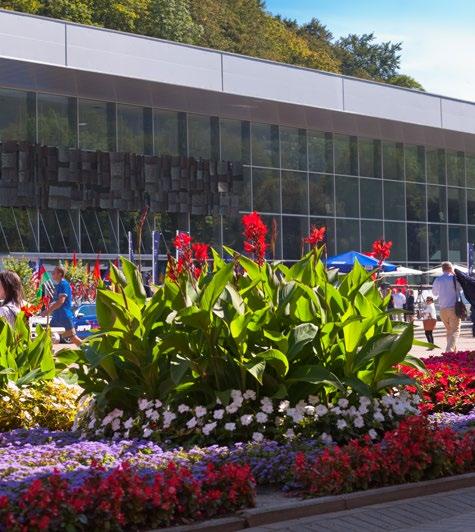

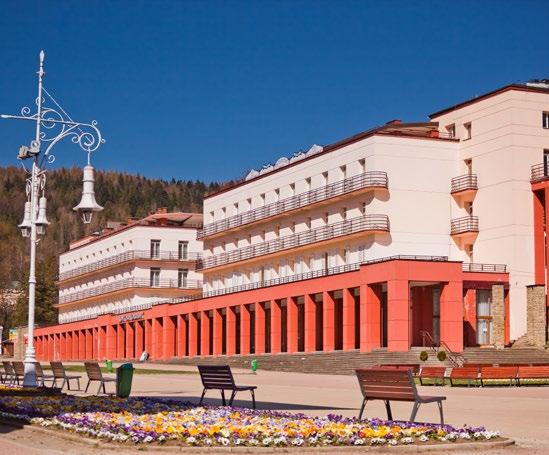
What can be treated here?
The world famous Festival of Jan Kiepura
The Main Mineral Water Pump Room
The Old Spa House
11
The New Spa House
Zdrój Główny (the Main Spring) is 0.32% acidulous ferric-calcium-manganese water, Słotwinka is 0.41% acidulous bicarbonate-sodium-magnesium-calcium-ferric water, Jan is 0.071% acidulous slightly mineralised water which contains calcium bicarbonate, Józef is 0.11% acidulous calcium bicarbonate water, Zuber is 2.14% acidulous sodium-magnesium-boric-bicarbonate water, Mieczysław is 0.42% acidulous calcium bicarbonate water, Tadeusz is 0.38% acidulous calcium bicarbonate water.
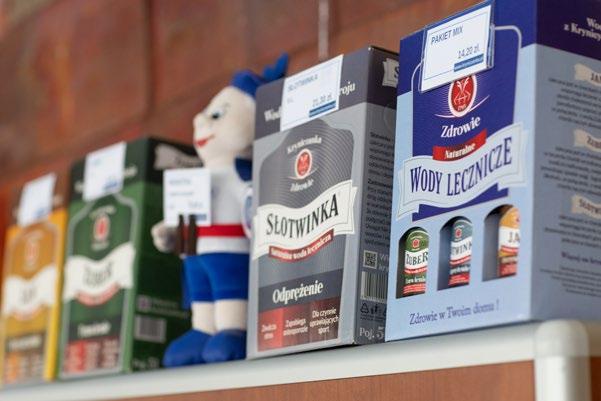


Waters
12 Krynica-Zdrój SPA
Mineral Water Pump Rooms


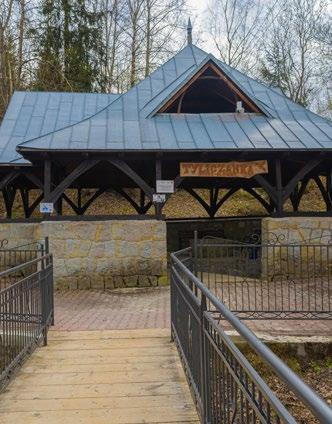
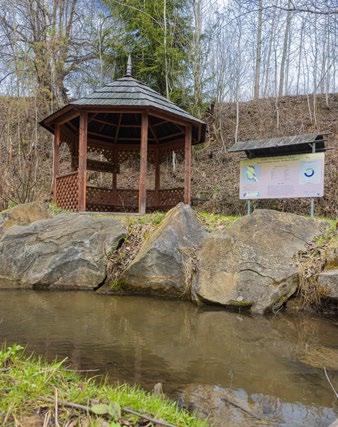


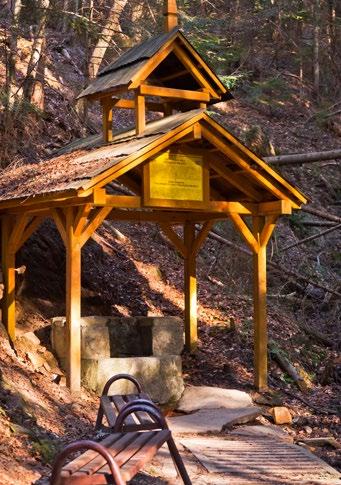
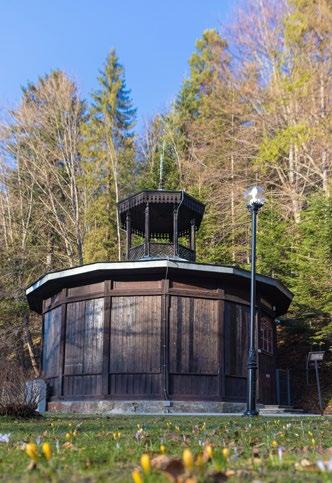
 Czekolada i Zdrój, the Mineral Water Pump Room Mieczysław in the Old Spa House
The Main Mineral Water Pump Room at Deptak in Krynica-Zdrój
The Mineral Water Pump Room ‘Jan’ by Nikifor Alley
The Spring of Love in Tylicz ‘Ciurkacz’ Spring at the foot of Huzary
The Mineral Water Pump Room ‘Słotwinka’ in Słotwiński Park
The Spring of Love on the slopes of Park Mountain
‘Bocianówka’ Spring on the slopes of Park Mountain
Czekolada i Zdrój, the Mineral Water Pump Room Mieczysław in the Old Spa House
The Main Mineral Water Pump Room at Deptak in Krynica-Zdrój
The Mineral Water Pump Room ‘Jan’ by Nikifor Alley
The Spring of Love in Tylicz ‘Ciurkacz’ Spring at the foot of Huzary
The Mineral Water Pump Room ‘Słotwinka’ in Słotwiński Park
The Spring of Love on the slopes of Park Mountain
‘Bocianówka’ Spring on the slopes of Park Mountain
13
The Spring of Mineral Water ‘Tyliczanka’
The location of mineral water pump rooms and springs

‘Zuber’ – water for the brave

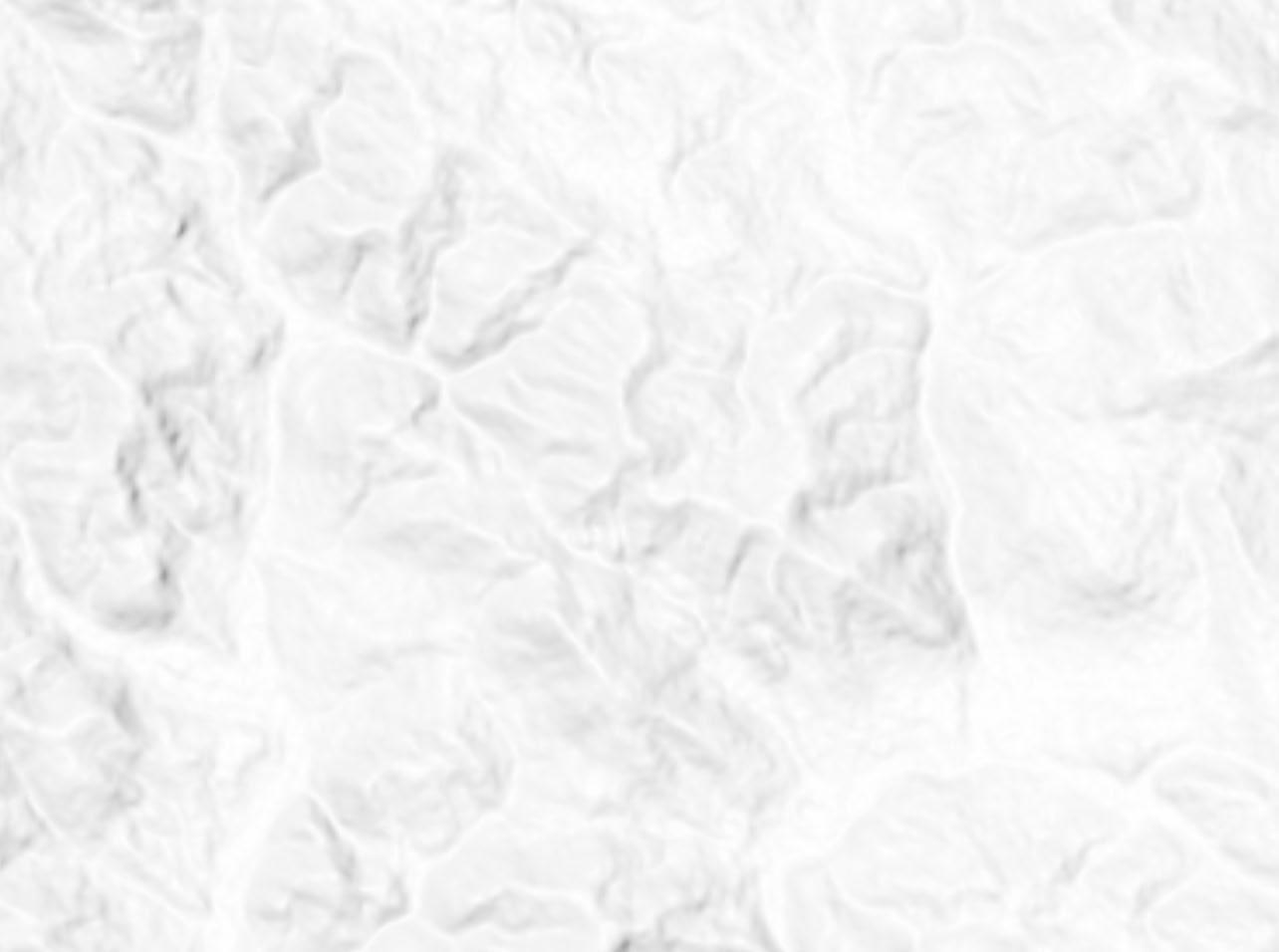
In the mineral water pump rooms of Krynica-Zdrój you are able to taste a few waters of various compositions. Some of them are delicate whereas others have characteristic taste and smell. ‘Zuber’ is one of the most distinctive and the most difficult to swallow one. It is said to reek of rotten eggs (but it is just hydrogen sulphide) and has a metallic taste. It is claimed that it is water for the bravest. For sure, thanks to its rich composition, it has healing properties. It is hyperosmotic, sodium-magnesium-boric bicarbonate acidulous water. It has the biggest number of mineral elements out of all mineral waters from Krynica. It is used in the treatment of peptic ulcer disease, in the case of hyperacidity, diseases of the circulatory system, hyperthyroidism or gout. What is interesting, it is of great assistance in the case of obesity or a hangover. The water is drawn from the borehole situated on the southern slope of Park Mountain, at a depth of almost 1,000 m. It got its name from a remarkable geologist
from the University of Lviv – Rudolf Zuber, who offered to drill deep boreholes in Krynica at the beginning of the 20th century.
KRYNICAZDRÓJ Tylicz 75 75 971 KonfederatówBarskich Kazimierza Wiel kgei o Mar szałkaJózefaPiłsudskiego J ózefa Ignaceg o Kraszews k eg o Z d r o o wa KazimierzaPułaskiego Kazimierz a Pułaskiego Wolności Huzary 864 Szalone 832 Jaworzynki 826 Góra Krzyżowa 812 Dzielec 792 Szwarcowa 790 Kotylnica 766 Jasiennik 765 Łan 742 Holica 697 Horb Górki 629 MasterSki P oprad zkiParkK r ajobrazow y PopradzkiParkKraj obrazowy M u sz y n ak Kryni c az n ka The Mineral Water Pump Room ‘Słotwinka’ Mieczysław the Mineral Water Pump Room ‘Jan’ ‘Ciurkacz’ Spring at the foot of Huzary The Spring of Love The Spring of Love in Tylicz ‘Tyliczanka’ spring ‘Bocianówka’ spring The Main Mineral Water Pump Room and its springs: The Main Spring Słotwinka Jan Józef Zuber Tadeusz
14 Krynica-Zdrój SPA
Healing or mineral?
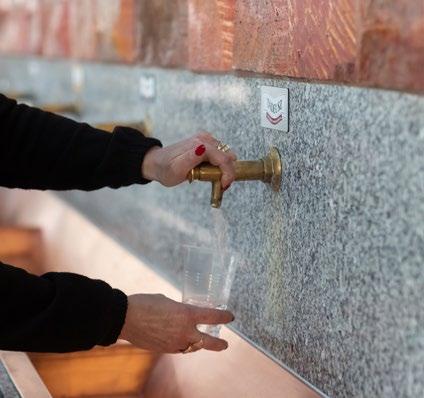
Mineral or healing – these two names are used interchangeably defining these unique waters with characteristic flavour, smell and medicinal properties which can be drunk in numerous pump rooms or at water intakes in the area of Krynica-Zdrój community. However, mineral water or healing one are two different terms. In its composition, mineral water has a lot of dissolved salts and gases whereas healing water comes from natural springs. It has constant physicochemical features, its composition does not raise objections and its healing properties were confirmed by the Council of Ministers. However, if healing properties have not been confirmed, such water may be only called mineral one with some healing properties


15
You can taste a variety of mineral waters in the Main Mineral Water Spring. It is also a place where health visitors, tourists and the locals meet.
History in a nutshell
A Wallachian village by the Kryniczanka
The first settlement by the Kryniczanka was founded in the place where Krynica has its spa part nowadays – famous Deptak and Dietl’s Boulevard, in 1547 under Wallachian law. Wallachian settlers established it even though Danek from Miastko (today’s Tylicz) became the first administrator. Wallachian people were nomadic shepherds who had come from the Balkans to the area of the Polish Carpathians in the 14th century. Wallachians were a nomadic people but local inhabitants did not like the fact that they grazed their sheep on their land so they forced them to settle. They were able to work and live in mountains which were inaccessible for the majority of people so there they founded their villages. One of them was Krzenycze. Wallachian villages were always established along a river or a creek so Krzenycze was created by the Kryniczanka. Every inhabitant got their strap of land which could be cultivated. They built their house and a pen where sheep were kept. Settlers had to establish their own authorities with kniaź as the head.
Nikifor, a Matejko from Krynica
Nikifor is one of the most fascinating artists who came from Krynica. He was born on 21st of May 1895 as Epifaniusz Drowniak. His mother was a poor, handicapped, Lemko woman whereas his father remains unknown. He spent his early life in abject poverty and soon he became orphaned. He was genetically burdened with a disability and slurred speech which hindered his communication
with people and education. His only treasure was his artistic talent. He had felt like an artist since his early age. The streets of Krynica became his workshop. He painted portraits or buildings of Krynica which he sold to visitors for a small change as souvenirs. He could not afford professional painting materials, hence, he painted on everything – book covers, cardboard or some random sheets of paper. One of his most interesting works were his self-portraits – he painted a more ideal version of himself adding what had been taken from him by cruel life. Initially, he was not appreciated. His art seemed to be too primitive. His first exhibition was organised with the assistance of artists from Lviv right before the Second World War. After the war, as a Lemko, he was resettled three times but he always came back to his beloved Krynica on foot. Thanks to Ela and Andrzej Banach in the 1950s, Nikifor’s paintings were displayed in various European cities. Soon, he became an extremely desired artist. He was particularly valued for ideally chosen colours in his works. Fame, however, did not change him. He did not spend money earned for painting at all and to the end of his life he painted on his favourite bench in Pułaski Street in Krynica. He signed his works
‘Nikifor Matejko’ (Matejko was a renowned Polish painter from the 19th century).
Józef Dietl, the father of balneology
‘Dietl’ is a surname which appears while discussing numerous Polish spas. Thanks to his achievements, he is called the father of Polish balneology. By education, he was a doctor, he was also the professor of medicine, the

1200 1547 r. 1363 r. 1400 1500
Danek from Miastko established a village by the Kryniczanka Creek called Krzenycze at the time (today’s Krynica).
1600 1300
Miastko (today’s Tylicz) was granted town rights by King Casimir III the Great. The town was a part of the Muszyna State.
16 Krynica-Zdrój HISTORY IN A NUTSHELL
dean of the Jagiellonian University and the president of Cracow. He was a passionate believer in natural medicine and hydrotherapy. Dietl came to Krynica in 1857 and immediately started to develop the resort by implementing new treatments and testing water. During his time, Krynica transformed into a genuine resort which aspired to European standards. During his retirement, Dietl bought another resort – Swoszowice.
Jan Kiepura


Right after Nikifor or perhaps on a par with him, Jan Kiepura, an opera singer, was the most popular person connected with Krynica. The Festival named after him takes place in the town annually. In the town you will also see his bust or a guest house which used to belong to him. Despite the fact that he had not been born in Krynica, he was strongly connected with the place. Jan Kiepura came from Sosnowiec and was born in 1902 as a baker’s son. As a young man, he loved singing but his father wanted him to become a lawyer. Hence, Kiepura went to Warsaw to study but secretly he had singing lessons. Already then he started performing. He made his debut in the Lviv Theatre of Opera and Ballet but he got really recognisable after his concert in Vienna. He gave concerts more and more frequently on the biggest stages of Europe – in Paris, Milan or London. When he performed in Tosca, he knew just a fragment of his part in Italian so he sang the rest in Polish and got a standing ovation anyway. He got numerous awards and came back to Poland as a star. He gave great concerts, sang operas but he also improvised in the streets,
on hotel balconies and in his beloved Krynica as well. He loved the town so much that he even built his own hotel there – Patria. He married a Hungarian, Martha Edgar. He emigrated to the USA with his family right before the Second World War when antisemitism started to escalate as both of them were of Jewish origin. After the War had broken out, he got engaged in propaganda actions concerning Poland and frequently sang patriotic songs. Together with his wife, he performed on Broadway, gave concerts or acted in films. He visited Poland after 19 years. Kiepura died of a heart attack after having received unfavourable news from his financial agent in 1966
1783
1807
1922
1794 r. 1806 r. 1937
1856 r. 1600 1700 1900
r.
r.
r.
r.
‘A small house’ was built in Krynica which was supposed to be the first Mineral Baths House.
Józef Dietl, a professor of the Jagiellonian University and a famous balneologist, started to operate in the resort.
Krynica with the lands of Muszyna were taken over by Austria. Soon, Baltazara Hacqueta was sent there to examine and estimate the springs of Krynica
Krynica was granted the status of a bathing spa.
2000
The town was granted the status of a spa.
The construction of the funicular to Park Mountains. It was the first funicular of this type in Poland.
–
Jan Kiepura Source: www.szukajwarchiwach.gov.pl
File number: 3/1/0/11/8218
The construction of the first Mineral Water Pump Room in Krynica.
1800
18th/19th century
17
Mineral waters were discovered in the area of the commune.
At the foot of Park Mountain
Krynica-Zdrój is a town located in the heart of the mountains at a height of approximately 560 – 620 m. The spa part of the town is situated by the Kryniczanka and other parts lie a bit higher on the slopes of the Beskid Sądecki, in the valleys of various streams. The town can boast of beautiful views, numerous historic sites and a rich spa and tourist infrastructure.
Krynica has always been connected with mineral waters present in this land. Thanks to them, it has become a spa. Although the beginning of the spa dates back to the 18th century, the name ‘Krynica’ proves that mineral springs had been known and used earlier. The most significant development of the town took place in the 19th century thanks to a great doctor and a professor, Józef Dietl. Because of him, Krynica-Zdrój is now the biggest and the best known Polish spa, a real pearl. The unique atmosphere of the town is created by the stories connected with famous people who used to visit the place during the Interwar

Period. Modrzejewska, Reymont, Tuwim or Gałczyński used to come here. Let us not forget about Jan Kiepura — a singer and an actor, an extremely important person for Krynica. Thanks to him and also Bogusław Kaczyński, the place is associated with music. We cannot forget about Nikifor – a primitive artist who left a lot of his works behind. The architects, such as Feliks Księżarski, who designed the spa buildings of Krynica, also contributed to the development of the place. The whole town and Deptak in particular hide memorabilia connected with all these people and interesting times in which they lived.
The town is surrounded by mountains which add to its charm and create the climate of Krynica. We can see hills everywhere and some of them, e.g. Parkowa Mountain, are situated in the centre and always play a vital role! Trails, including the Main Beskid Trail, run through the centre. Deptak constitutes a starting point for EuroVelo 11 and for winter sleigh rides.
Deptak
Deptak is in the centre of the resort, the most significant place either for health visitors or tourists. In the past Deptak was the place to be especially if you wanted to meet somebody famous. It was claimed to be like a ballroom as it was surrounded by beautiful buildings and visitors strolling on it were always beautifully attired. This is also the place where the most important historic sites are located. There is the Main Mineral Water Pump Room, the Old and the
New Spa House, there is also a band shell, the Peat and Mineral Baths, the monuments of, for instance, Adam Mickiewicz and a beautiful fountain. Deptak is the place where trails and paths leading to Parkowa Mountain start, it is also crossed by the Main Beskid Trail. It is especially beautiful in winter wnem alleys are covered in snow and the buildings are decorated with colourful lights.
Krynica-Zdrój
18 Krynica-Zdrój KRYNICA-ZDRÓJ
Dietl’s Boulevards
Dietl’s Boulevard is one of the most beautiful alleys in the town which runs along the Kryniczanka parallely to Deptak. Remarkably decorated wooden villas stand by the alley in a row. The villas were constructed in the second half of the 19th century when Józef Dietl was developing the spa. The famous resort was popular with artists and aristocrats. Exactly for them guest houses in the Swiss style were erected. Walking from the north, we go past ‘Wisła’ where Emilia Burzyńska, the Jagiellonian University professor’s widow, invited young ladies from good homes who
were looking for a husband in Krynica-Zdrój. Then, we can see ‘Witoldówka’ built by Dr Skórczewski (and named in honour of his son) where he ran a dietician centre – very modern as for those times. Next to it, there is a brightcoloured ‘Tatrzańska’ – a reconstruction of a totally consumed by the fire villa built in 2021. If we move further, we will see ‘Małopolanka’ with ‘the House of Coffee and Wine’ and, last but not least, proudly presenting ‘Romanówka’ which houses the Museum of Nikifor.

The Museum of Nikifor – Romanówka Villa
The museum of the famous artist from Krynica is situated in a beautiful, historic villa ‘Romanówka’. It is one of the examples of buildings erected in the Swiss style. It is a site of the Wooden Architecture Route together with other villas by Dietl’s Boulevard. It is interesting that the building used to be in a different place and had a completely different function. However, it was relocated to the centre due to its amazing architecture. Inside we will find a collection of memorabilia connected with the most popular primitive artist – Nikifor. There are his works – paintings of people, buildings, autoportraits and also his equipment and personal possessions.
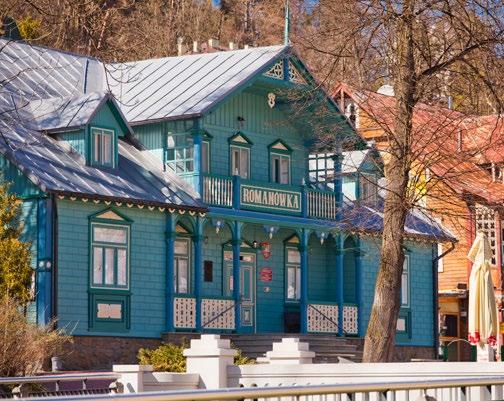

The Old Spa House
The Old Spa House is the most popular building standing right by Deptak. It is opposite the Main Mineral Water Pump Room and the Band Shell. This is an impressive, neo-renaissance building which resembles a palace. It used to be called a station as carriages with health visitors stopped right in front of it. The building was designed by Julian Niedzielski together with Jan Zawojski, an architect wellknown for designing other buildings in Krynica. Inside there is a ballroom where Józef Piłsudski used to spend his time. Today there is the Mineral Water Pump Room and Chocolate Cafe.
19
The Main Mineral Water Pump Room
The Main Mineral Water Pump Room is one of the most distinguishing and the most frequently visited buildings in Krynica-Zdrój. It was erected in the second half of the 20th century in the modernist style and rebuilt at the beginning of the 21st century. It is a glazed construction covered with an aluminium roof. Inside we can taste mineral waters such as: Jan, Słotwinka, Tadeusz, Zdrój Główny (the Main Spring) and Zuber. Moreover, the pump room houses a cafe, the Winter Garden, stalls with souvenirs and cosmetics and a concert venue. A lot of interesting events take place there during the whole year. This place is definitely not only for health visitors!
The Museum of Toys
The Museum of Toys is a magical place where adults can go back in time and children can see the toys their grandparents used to play with! Rag dolls, wooden trains or tin soldiers – this is only the beginning! The exhibition displays exhibits which come from even antiquity and the following epoques up to the 80’s of the 20th century! The guides tell stories of the most interesting items, about children to whom they used to belong and about creativity thanks to which children could find joy even in difficult times! A room with Lego blocks is a great attraction not only for children!
The Mineral Water Pump Room ‘Jan’

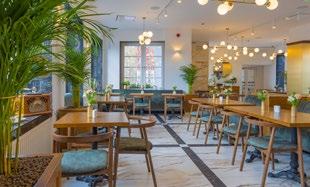

The Mineral Water Pump Room ‘Jan’ is situated at the foot of Park Mountain, at a stone’s throw from Deptak. This is a beautiful, historic building from the Interwar Period. It was constructed out of larch wood in a style based on the Zakopane style. At the place, you can taste water from two springs: ‘Jan’ and ‘Józef’.
The Monument of Nikifor
Not far away from the Mineral Water Pump Room ‘Jan’ you can see the monument of Nikifor. A sculptor, Czesław Dźwigaj, presented the artist as he really was. Nikifor is sitting on a bench and painting. Next to him his faithful friend is sitting – a mongrel with whom he was walking through the town. Some claim that Nikifor called him Hałko. However, every dog for him was Hałko as they made the ‘hau, hau’ sound (hau – wooof).
The Church of Transfiguration and the Mother of God of Częstochowa
The wooden Church of Transfiguration of the Mother of God of Częstochowa is the first Spa Church in the town (1863). It is also called the Park Church as it is situated in the Park right by Deptak. It was built in the baroque style on a Greek-cross plan based on an octagon. Inside we can see two altars from the turn of the 20th century with paintings of the Transfiguration of the Mother of God of Częstochowa.
Park Mountain lies in the area of the town and trails which lead to it start at Deptak. It rises to a height of 742 m. On its northern and eastern slopes the Spa Park stretches – a place created for health visitors with numerous alleys and benches. We can get to the top of the mountain by the funicular whose down station is located close to Deptak. The funicular is exceptional – it dates back to 1937! This is the oldest construction of this type in Poland. The down and upper stations are also unique – there we can go back in time and feel the atmosphere of Krynica from the Interwar Period. On the top we can take advantage of different attractions, have a bite at some catering establishments and admire views of the Beskid Sądecki and the Low Beskids. On the western slope of Parkowa Mountain landslide dams were formed – Czaple Stawy (Grey Heron Ponds). Michasiowa Polanda (Michasiowa Clearing) and the Forest Sanctuary of the Mother of God, the Queen of Krynica are also worth visiting.

20 Krynica-Zdrój KRYNICA-ZDRÓJ
Park Mountain
Słotwiński Park and the Brine Graduation Tower
Słotwiński Park is a cosy, peaceful place on the edge of Krynica. After its renovation in 2019 it constitutes one of the most interesting parks in the town. There we can see the Chinese House built in 1806 – since 1863 it covered the Main Spring and was the first mineral water pump room in Krynica. Moreover, the brine graduation tower created in 2019 awaits health visitors too. It uses brine which comes from Salt Mine in Bochnia – it has the biggest content of iodine. The air around it is similar to the one by the Baltic Sea. Apart from iodine, brine inhalations provide bromine, calcium, magnesium, potassium, sodium and iron. It has a beneficial influence on the respiratory tract, the nervous system and helps to build immunity.

The panoramic tower with a path among treetops, Słotwiny Arena
The panoramic tower with a path among treetops is an amazing place on the map of Krynica. It is a place where you can take a walk surrounded by nature, look at it closely and admire beautiful views. The tower is located at the top of Słotwiny Arena Ski Station at a height of 896 m. You can get there on foot or by a chair lift. The whole construction was created from durable acacia wood. It rises to a height of 49.5 m from which amazing views of nearby mountains spread. The climb at the tower is gently sloping so we can take a walk with children, prams or people with mobility difficulties. The whole path is 1,030 m long and serves an educational purpose. There are boards containing information on the local nature, history and culture. Creative installations make sightseeing more enjoyable for kids. However, a real treat for the youngest is a 60 m long slide which will take them down from the tower! Every now and then a special event such as a concert takes place at the tower – it is worth taking part in it!

The Gondola Lift to Jaworzyna Krynicka with a panoramic platform
The down station of the Gondola Lift to Jaworzyna Krynicka is situated in Czarny Potok, a district of Krynica-Zdrój. The Gondola consists of 6-person cable cars which cover the distance of 2 km and the altitude difference of 456 m in 7 minutes (they move at the speed of 5m/s). At the upper station you will be enchanted by a breathtaking panorama of the Low Beskids together with its highest peak – Lackowa. The cable cars can take your sports equipment e.g. skis too. The Gondola is extremely popular among winter sports enthusiasts but in summer a lot of people who want to reach Jaworzyna Krynicka avoiding arduous climb use it as well. The newest attraction of Jaworzyna is a panoramic platform built on the top of the upper station. You will be able to admire the peaks of the Tatras, the Pieniny, the Beskid Sądecki, the Low Beskids and the Bieszczady Mountains from it.

21
Around Krynica
The village which used to be a town and wooden architecture
Krynica-Zdrój is not the only place which the commune has to offer! Although the town may be enough for some tourists, it is worth going beyond its borders. Especially if you look for peace and quiet, omnipresent nature, mountains, cycling paths or wooden, a bit forgotten Orthodox churches.

Today Tylicz is a small village famous for its great ski stations and legendary mofettas. It used to be the second after Muszyna, the most important town in the Muszyna State. Then, it was called Miastko and was more important than Krynica! Nowadays the square is the only proof of its municipal character. Tylicz was granted town rights two times – and two times it lost them. If you want to have a rest from the hustle and bustle of Krynica, you should visit it. It is definitely a more peaceful place. There is a wooden
Orthodox church and a Roman Catholic church. Both temples are sites of the Wooden Architecture Route.
The churches of Tylicz are not the only wooden buildings in the commune. A few of them are located in Krynica-Zdrój. There you will see the Orthodox church in Słotwiny, the Park Church and wooden villas. However, if we search for less tourist places, the eastern part of the commune which belongs to the Low Beskids would be the place. It is a western part of Lemko Land which used to be dwelled in by Lemko people which stretches from the Bieszczady Mountains to the Pieniny. Although you will not find a lot of Lemkos in this area, they left a lot of Orthodox churches behind. Such a wooden pearl may be seen in almost every village.
The Square in Tylicz
Nowadays the Square seems to be a somnolent, peaceful place. In the past it was quite the opposite – in the Middle Ages fairs and markets took place there! It was loud and crowded, foreign merchants were everywhere selling their exotic goods. Today in the middle of the Square there is a park and you can only imagine the din of the mediaeval fair. The Square is surrounded by houses combining Lemko and Highlander traditions which date back to the end of the 19th century. Perpendicular streets diverge from the square. In the centre there is a stone shrine of St Florian. It was erected in 1808 and probably Saint Florian was
supposed to protect the town from fires which had consumed the town plenty of times. On the south side of the Square, opposite the Museum, on a small mound there is a monument devoted to two significant for Tylicz events: the 650th anniversary of granting town rights to Tylicz by King Casimir III the Great (the part with the emblem of Tylicz) and Bar Confederation with Kazimierz Pułaski, the brave leader (the part with Kazimierz Pułaski on a horse). The monument also presents the Parish Church of Saints Peter and Paul from 1612 and Virgin Mary who was chosen as a patron saint of Confederates.
22 Krynica-Zdrój AROUND KRYNICA
The Golgotha in Tylicz
The Golgotha in Tylicz is a hill over the parish church in Tylicz. It is the newest sacred attraction of the village with rosary alleys and a panoramic tower modelled on the Tower of Babel. Magnificent views of the vicinity spread from it. The hill is surrounded by a garden with paths, benches and places of religious worship. We will find numerous symbols which refer to Christianity and its history in the place. It is both a tranquil and beautiful place.
The Museum of Tylicz
The Town Hall used to be situated at 1 Rynek Street. Now the building houses the Centre of Culture and the Museum of Tylicz. We will find there a collection connected with the history of Tylicz, mediaeval crafts, the works of artists from Tylicz, old photographs and regional costumes. You will also see period skates and skis.
The Parish Church of Saints Peter and Paul
The church was funded by Bishop Piotr Tylicki in 1612 during the second location of the town. It is a single-nave building (with a little higher presbytery) of log construction. Inside we can see rococo altars from the 18th century and a painting of the Madonna of Tylicz (with Infant Jesus) from the turn of the 17th century. The church is a site of the Wooden Architecture Route.
The Orthodox Church of Saints Cosma and Damian

A little bit out of the way on a small hill there is an Orthodox church built 130 years later than the Church of Saints Peter and Paul. Wallachian shepherds came to Tylicz in

the 16th century and in the 18th century they were such a large group that they decided to build their own temple. It is a West Lemko church of a log construction. There are two small rooms for singers alongside the nave called ‘kryłosy’. We will not find them anywhere else in Lemko land. The polychromy inside the temple dates back to 1938 and relates to the celebration of 950 th anniversary of the christianisation of Kievan Rus.
Farma Lama in Tylicz
Farma Lama is an agritourism farm located in a lovely part of the Beskid Sądecki. However, the owners offer something more than a stay in the mountains. There is a mini zoo with farm animals and interesting birds. At the place you will find peacocks, Eurasian collared doves and even parrots. Some animals, if the owners agree, may be fed! Farma Lama is also a horse stable. There is a roofed riding arena, the place offers riding lessons or an organised horseback tour around the Beskid Sądecki. Fascinating workshops, pony rides, archery or campfires are organised for groups.
The Greek Orthodox Church of St Paraskeva in Czyrna
The Greek Orthodox Church of St Paraskeva in Czyrna is a wooden temple of a log construction which was erected at the end of the 19th century according to the design of an Austrian architect. It was built on a cross plan. It has metal roofing with a tower over the nave, the narthex and the presbytery. There is the iconostasis from the 20th century and the rococo icon of St Paraskevia from the second half of the 18th century. Currently the building serves as the Roman Catholic Church of the Immaculate Heart of Holy Virgin Mary.
The Orthodox Church of Sts Cosma and Damian
23
The Orthodox Church of St Paraskeva in Czyrna
Commune in an active way
Hiking Trails
THE MAIN BESKID TRAIL - The Main Beskid Trail is over 500 km long! It starts in Ustronie in the Silesian Beskids and ends in Wołosate in the Bieszczady Mountains. Its central part runs through Krynica – it starts on Jaworzyna Krynicka, leads through the Czarny Potok Valley and the centre of the resort to Huzary and further to Mochnaczka Niżna which lies on the border between the Beskid Sądecki and the Low Beskids.


HUZARY (864 M) - Huzary is a popular place for walks among local people and tourists. The hill is a crossroads for various hiking trails. You can get there from Deptak through Park Mountain along the yellow trail. We can come back to Krynica along the red Main Beskid Trail. It is an easy hike, 8 km long during which we will see places connected with the history of the region. The battles of Bar Confederates took place on the top of Huzary. A buried grenade and a sabre from the 18th century was discovered there.
JAWORZYNA KRYNICKA (1,114 M) - Jaworzyna Krynicka is the highest peak of the Jaworzyna Range. Beautiful trails and the Gondola Lift will lead us there. A bit below the top of it, at a height of 1,050 m, close to the Main Beskid Trail there is the PTTK (Polish Sightseeing Society) Shelter of Józef Piłsudski. It offers accommodation and food and beverage facilities. From the clearing in front of the shelter, magnificent views spread. The Museum of Mountain Tourism is right by the shelter where we can see a visitors’ book from the pre-war period. Hiking down from the shelter, along the red trail in the direction of Krynica, we will come across the legendary rocky outcrop –the Devil’s Stone and the Brigands’ Cave. We can reach Jaworzyna by the Gondola Lift from Czarny Potok, along the red trail also from Czarny Potok or Deptak, along the yellow or blue trail from Deptak through the Krzyżowa Pass where we change the trail into the green one which takes us directly to the top of Jaworzyna Krynicka.

24 Krynica-Zdrój COMMUNE IN AN ACTIVE WAY
By bikes
VELO KRYNICA
VeloKrynica is an easy cycling path for those who want to sightsee the commune by bike. The trail starts at Deptak in Krynica and leads to Muszyna. On the way we go past Powroźnik – a place worth seeing as there is the Orthodox Church of St James the Younger (a UNESCO site). We will cover the distance in approximately 1h as the trail is only 12 km long. If you want to extend the route a little bit, on the way back in Powroźnik you may turn in the direction of Tylicz from where you will come back to Krynica along Pułaski Street. The extended route is 21 km long.
MTB CYCLING TRAILS


The amateurs of MTB and cycling in the mountains full of ambitious ascents and exciting descents will find themselves in Krynica. There are eight MTB routes in the commune with a total length of 125 km. They bear the names of the springs in Krynica and are marked with different colours. The fact that they are well-marked facilitates cycling – there are signs with a cyclist of an appropriate colour and the name of a given trail, information boards and warning signs painted with yellow, fluorescent paint. GPX trace can be downloaded to your device or you may use mapy.cz application
mapy.cz
krynica.org.pl/aktywnie/trasy-rowerowe-mtb
All the trails start at Deptak in Krynica, below the Centre of Tourist Information and lead, among others, to Jaworzyna Krynicka (1,114 m), Park Mountain (742 m) or Huzary (864 m).
TO JAWORZYNA BY BIKE
It is a good idea to take advantage of the Gondola Lift and get to the top of Jaworzyna with a bike in order to cycle along mountain trails. From the top, we may set off in the direction of Runek and Bacówka over Wierchomla from which along a gravel road we can ride down to Szczawnik. We come back to Krynica from Szczawnik along VeloKrynica through Muszyna and Powroźnik. More experienced cyclists can skip the Gondola Lift and ride up to the top of Jaworzyna along the trail from Czarny Potok
BY ELECTRIC BIKE INTO THE MOUNTAINS
There are a few spots in the commune where you can rent electric bikes or scooters. It is a great proposition for those who want to hit the trails of the Beskid Sądecki and the Low Beskids. A bike assisted with an electric engine enables us to ride up steep climbs and trails of various difficulty irrespective of one’s physical condition. It is a great idea for beginners.
SŁOTWINY BIKE PARK
Słotwiny Ski Station is active not only in winter. From spring to autumn the Bike Park is open here. It consists of 4 well-prepared bike routes of various difficulty. The routes are one-way and in total are 10 km long. It is attractive due to berms, bumps, step up and step down tables. The most difficult trail has stones, roots, narrow passages and steep slopes. There is a rental – you can rent various bikes, both for children and adults, helmets, goggles and other protective equipment. There is also a cycling school.
Go-kart track in Tylicz
Go-kart track is a real treat for motorisation enthusiasts or thrill seekers. The width of a lane is from 5 to 6 metres. It is possible to rent small go-karts for children so that they can learn how to drive. The track is open in summer, in winter it transforms into an ice-rink.
Bike Park Slotwiny
25
By bike on Jaworzyna Krynicka
Actively in winter
Jaworzyna Krynicka Ski Centre is situated on the slopes of the highest mountain in the vicinity. There are eight runs of various difficulty with a total length of 8.3 km – four of them have FIS certificate of approval. Skiers and snowboarders can take advantage of the gondola lift, four chair lifts and eight T-bar lifts. There is a snow park for thrill seekers where you can get crazy skiing or snowboarding.
2
SŁOTWINY SKIING COMPLEX
Słotwiny Skiing Complex is a place which offers four lifts and runs of various difficulty. All of them are regularly snowed and lit. The runs have a FIS certificate which enables the organisation of competitions and training at a high level.
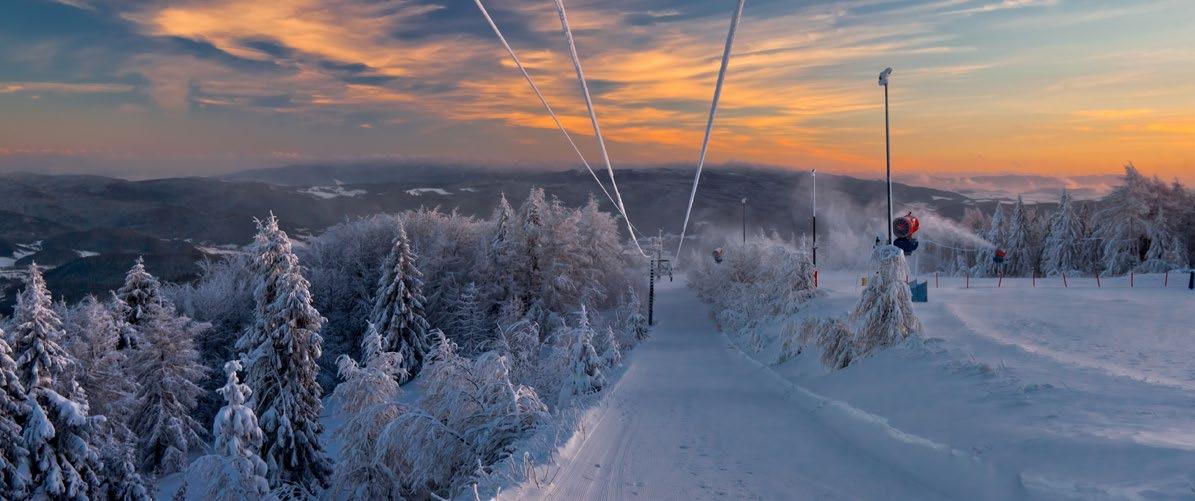

Słotwiny Arena is one of the best known ski stations in Krynica! The centre has three lifts – two chair ones, one carpet lift and nine runs of various length and difficulty. Additionally, there are catering spots, equipment rentals and a panoramic tower! Children can learn how to ski at a skiing school and spend time at Kubuś Playground.
4
HENRYK SKI CENTRE
Henryk-Ski Centre is in the heart of Krynica-Zdrój, on the slopes of Krzyżowa Mountain (812 m). Wide, moderately steep runs will be ideal for beginner and intermediate skiers and snowboarders. There are two chairlifts and a carpet lift.
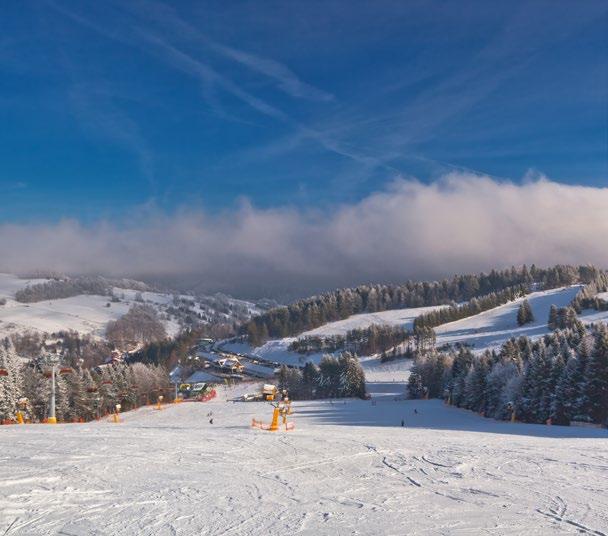 1 JAWORZYNA KRYNICKA SKI CENTRE
3 SŁOTWINY ARENA
1 JAWORZYNA KRYNICKA SKI CENTRE
3 SŁOTWINY ARENA
1 3 2 26 Krynica-Zdrój ACTIVELY IN WINTER
5 MASTER SKI STATION

Master Ski Station in Tylicz prepared 6 runs with a length between 500 to 900 m of various difficulty and two pistes. There is a ski race slope, a snowpark and a winter playground. Skiers and snowboarders may use a chairlift and a platter lift. A short training run and a carpet lift are prepared for beginners. The station offers numerous facilities for children.
6 TYLICZ SKI STATION
Tylicz Ski Station has 6 runs of various difficulty. Cross-country skiing trails are also prepared around the station. There is a rich offer for children – children can learn how to ski at a skiing school, sled down from a hill, spend time in the playing room or go snowtubing. Tylicz Ski has chair, T-bar and carpet lifts.

7 ‘U LEŚNIKÓW’ CROSS-COUNTRY SKIING TRAILS



The Forest Research Institute of the Agricultural University in Kraków created three cross-country skiing trails on the slopes of Jaworzyna Krynicka, in the Czarny Potok valley. They are 500 m, 2,400 m and 2,800 m long, lead through a forest and are well-groomed. All of them are certified by FIS.

5 4 7 6 27
Popular cross-country skiing trails:


CZARNY
POTOK – JAWORZYNA
KRYNICKA – CZARNY
POTOK 6,3 KM
The trail begins at the down station of the Gondola Lift to Jaworzyna Krynicka and leads along the green hiking trail to the top of the mountain. From Jaworzyna we can ski down along the run no 1.

KM
The trail begins at the down station of the Gondola Lift to Jaworzyna Krynicka. Then, it leads along the road to the Shelter. From the Shelter we go along the green and red trail to Runek and to Hala Łabowska. We return along the same route.
KM
The trail begins at the down station of Gondola Lift to Jaworzyna Krynicka. Initially it leads along the green hiking trail to the Krzyżowa Pass. There we change the trail into the blue one which runs through Runek to Bacówka over Wierchomla. We ski down the road to Szczawnik.
CZARNY POTOK – JAWORZYNA KRYNICKA – HALA ŁABOWSKA 28
CZARNY POTOKBACÓWKA OVER WIERCHOMLA - SZCZAWNIK 16
28 Krynica-Zdrój ACTIVELY IN WINTER
The ice rink in Krynica-Zdrój
The ice rink in Krynica-Zdrój is a full-size (30 x 60m), roofed ice-rink. There is a rental where you can get figure or hockey skates. The ice rink has seats which will hold 2,635 people and 6 changing rooms for players. Sports matches and performances are organised there very often.

Sleigh rides

Sleighs rushing through crunching snow, white valleys, the starry sky and torches – sleigh rides constitute an attraction both for adults and children. It is something you have to try while being in the mountains. Sleigh rides in the area of Krynica Commune are organised in Tylicz and Krynica-Zdrój. Sleighs are pulled by horses or tractors. When there is not enough snow, wheels are added to sleighs as an assistance. After sleigh rides, campfires with highlander music or feasts in regional restaurants are organised. You can begin your snow ride in the centre of the town – horses and sleighs wait for you right by Hawana.
Sledging in Krynica
In the winter capital of Sądecki Land there must be places where you can go sledding on sledges or any other equipment used for sliding down on snow. Due to the landform of the commune, you will find a plethora of safe glades ideal for this activity. Park Mountain, the slopes of Jaworzyna Krynicka or the slopes of Drabiakówka in Słotwiny. In the vicinity of Tylicz we can go sledding on the slopes of Szubienica. Specially prepared areas for children can be found on Park Mountain – there is Polana Kubusiowy Stok (Kubuś Slope). In Słotwiny there is Trikke Skki Arena where we can slide down on sleds, dinghies or trikke skkis. On the slopes of Iwonka, right behind the ice rink, there is an all-year-round luge track – Sankostrada. Special sledding slopes are prepared by Tylicz Ski as well.

1 2 3 29
The project ‘The support of small and medium-sized enterprises which operate in tourism and increasing the recognisability of Lesser Poland as a tourist economic brand’ (no RPMP.03.03.01-12-0593/18) co-funded by the European Union as a part of the Regional Operational Programme of Lesser Poland for the years 2014 – 2020.
the Foundation for the Development of Regions


www.f-rr.org

the Association of Polish Spa Communities
www.sgurp.pl
 The project is co-funded by the Regional Operational Programme of Lesser Poland for the years 2014 – 2020. The support of small and medium-sized enterprises which operate in tourism and increasing the recognisability of Lesser Poland as a tourist economic brand.
The project is co-funded by the Regional Operational Programme of Lesser Poland for the years 2014 – 2020. The support of small and medium-sized enterprises which operate in tourism and increasing the recognisability of Lesser Poland as a tourist economic brand.




 The project is co-funded by the Regional Operational Programme of Lesser Poland for the years 2014 – 2020. The support of small and medium-sized enterprises which operate in tourism and increasing the recognisability of Lesser Poland as a tourist economic brand.
The project is co-funded by the Regional Operational Programme of Lesser Poland for the years 2014 – 2020. The support of small and medium-sized enterprises which operate in tourism and increasing the recognisability of Lesser Poland as a tourist economic brand.













 A view from Jaworzyna Krynicka (1,114 m) of the Czarny Potok Valley and distant ranges of the Beskids
A view from Jaworzyna Krynicka (1,114 m) of the Czarny Potok Valley and distant ranges of the Beskids





 The peak of Parkowa Mountain
The funicular will take us to the top of Park Mountain
The subalpine climate, very characteristic for this region, makes snow cover remain in the region for an exceptionally long time
The gondola lift will take us to the top of Jaworzyna Krynicka which towers over Krynica
Mild hills surround Krynica from every side
The peak of Parkowa Mountain
The funicular will take us to the top of Park Mountain
The subalpine climate, very characteristic for this region, makes snow cover remain in the region for an exceptionally long time
The gondola lift will take us to the top of Jaworzyna Krynicka which towers over Krynica
Mild hills surround Krynica from every side























 Czekolada i Zdrój, the Mineral Water Pump Room Mieczysław in the Old Spa House
The Main Mineral Water Pump Room at Deptak in Krynica-Zdrój
The Mineral Water Pump Room ‘Jan’ by Nikifor Alley
The Spring of Love in Tylicz ‘Ciurkacz’ Spring at the foot of Huzary
The Mineral Water Pump Room ‘Słotwinka’ in Słotwiński Park
The Spring of Love on the slopes of Park Mountain
‘Bocianówka’ Spring on the slopes of Park Mountain
Czekolada i Zdrój, the Mineral Water Pump Room Mieczysław in the Old Spa House
The Main Mineral Water Pump Room at Deptak in Krynica-Zdrój
The Mineral Water Pump Room ‘Jan’ by Nikifor Alley
The Spring of Love in Tylicz ‘Ciurkacz’ Spring at the foot of Huzary
The Mineral Water Pump Room ‘Słotwinka’ in Słotwiński Park
The Spring of Love on the slopes of Park Mountain
‘Bocianówka’ Spring on the slopes of Park Mountain






























 1 JAWORZYNA KRYNICKA SKI CENTRE
3 SŁOTWINY ARENA
1 JAWORZYNA KRYNICKA SKI CENTRE
3 SŁOTWINY ARENA












